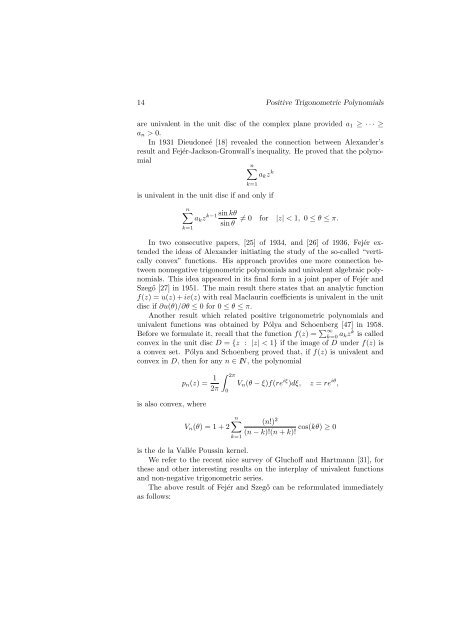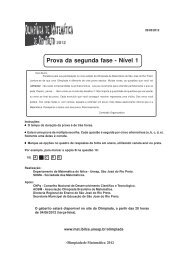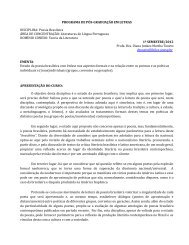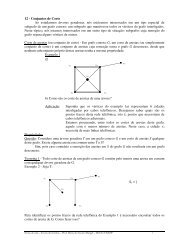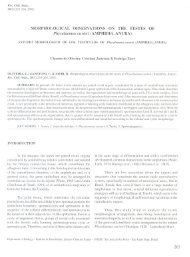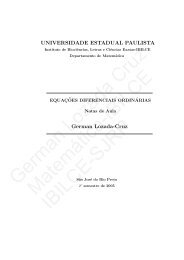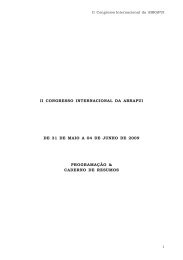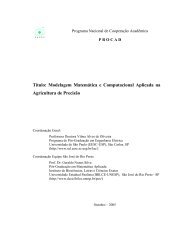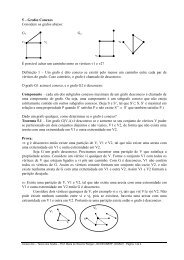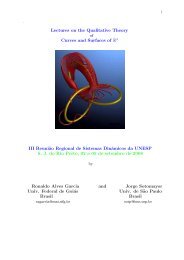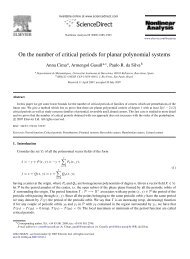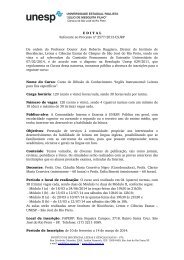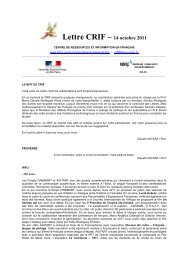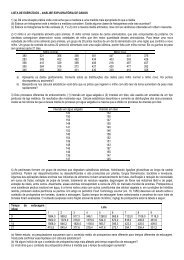Extremal Positive Trigonometric Polynomials - CiteSeerX
Extremal Positive Trigonometric Polynomials - CiteSeerX
Extremal Positive Trigonometric Polynomials - CiteSeerX
You also want an ePaper? Increase the reach of your titles
YUMPU automatically turns print PDFs into web optimized ePapers that Google loves.
14 <strong>Positive</strong> <strong>Trigonometric</strong> <strong>Polynomials</strong><br />
are univalent in the unit disc of the complex plane provided a 1 ≥ · · · ≥<br />
a n > 0.<br />
In 1931 Dieudoneé [18] revealed the connection between Alexander’s<br />
result and Fejér-Jackson-Gronwall’s inequality. He proved that the polynomial<br />
n∑<br />
a k z k<br />
k=1<br />
is univalent in the unit disc if and only if<br />
n∑<br />
k=1<br />
k−1 sin kθ<br />
a k z ≠ 0 for |z| < 1, 0 ≤ θ ≤ π.<br />
sin θ<br />
In two consecutive papers, [25] of 1934, and [26] of 1936, Fejér extended<br />
the ideas of Alexander initiating the study of the so-called “vertically<br />
convex” functions. His approach provides one more connection between<br />
nonnegative trigonometric polynomials and univalent algebraic polynomials.<br />
This idea appeared in its final form in a joint paper of Fejér and<br />
Szegő [27] in 1951. The main result there states that an analytic function<br />
f(z) = u(z) + iv(z) with real Maclaurin coefficients is univalent in the unit<br />
disc if ∂u(θ)/∂θ ≤ 0 for 0 ≤ θ ≤ π.<br />
Another result which related positive trigonometric polynomials and<br />
univalent functions was obtained by Pólya and Schoenberg [47] in 1958.<br />
Before we formulate it, recall that the function f(z) = ∑ ∞<br />
k=0 a kz k is called<br />
convex in the unit disc D = {z : |z| < 1} if the image of D under f(z) is<br />
a convex set. Pólya and Schoenberg proved that, if f(z) is univalent and<br />
convex in D, then for any n ∈ IN, the polynomial<br />
p n (z) = 1<br />
2π<br />
is also convex, where<br />
∫ 2π<br />
0<br />
V n (θ) = 1 + 2<br />
V n (θ − ξ)f(re iξ )dξ, z = re iθ ,<br />
n∑<br />
k=1<br />
(n!) 2<br />
(n − k)!(n + k)! cos(kθ) ≥ 0<br />
is the de la Vallée Poussin kernel.<br />
We refer to the recent nice survey of Gluchoff and Hartmann [31], for<br />
these and other interesting results on the interplay of univalent functions<br />
and non-negative trigonometric series.<br />
The above result of Fejér and Szegő can be reformulated immediately<br />
as follows:


